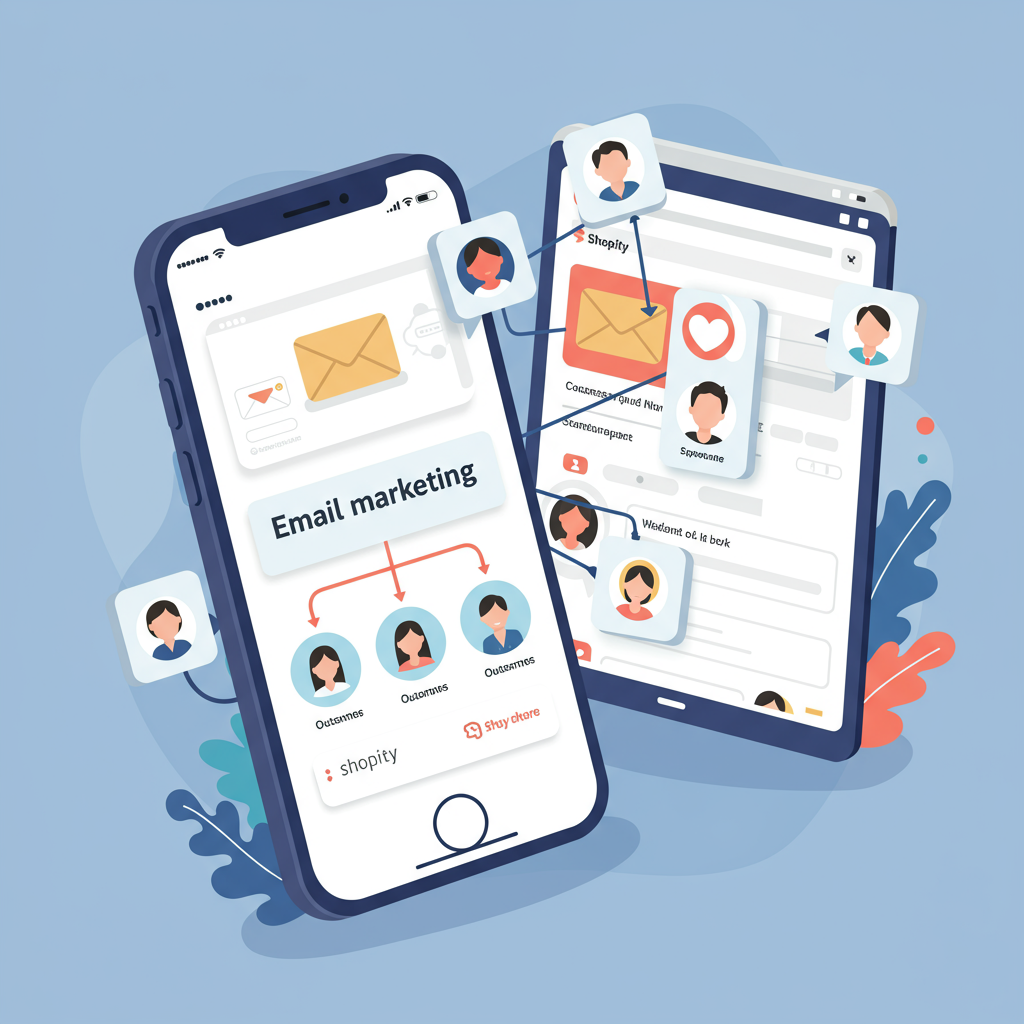Unlock consistent sales and build lasting customer relationships with automated email flows for your Shopify store.
Hello fellow Shopify merchants! I’m here today to talk about something that has truly transformed my own e-commerce business: email marketing automation. If you’re running a Shopify store, you know how vital it is to connect with your customers beyond the initial purchase.
Email marketing isn’t just about sending out newsletters anymore; it’s about building relationships, nurturing leads, and driving repeat sales on autopilot. That’s where automation comes in.
For me, setting up robust email automation has been a game-changer. It allows me to communicate with my customers at the right time, with the right message, without me having to manually send each email.
Think about it: imagine a customer abandons their cart. Without automation, that sale is likely lost. With it, a perfectly timed reminder email can bring them right back to complete their purchase.
The beauty of automation is its efficiency. Once you set up your flows, they work tirelessly in the background, 24/7, generating revenue and fostering customer loyalty while you focus on other aspects of your business.
So, where do we begin? The first step is choosing the right email marketing platform (ESP) that integrates seamlessly with your Shopify store. While Shopify Email is a great starting point, many merchants, including myself, often graduate to more powerful platforms like Klaviyo, Omnisend, or Mailchimp for advanced features.
When selecting an ESP, I always look for robust segmentation capabilities, drag-and-drop email builders, detailed analytics, and, of course, excellent automation features. Make sure it fits your budget and scales with your business.
Once you’ve chosen and integrated your ESP with Shopify, it’s time to plan your automation flows. These are the sequences of emails triggered by specific customer actions or events.
Let’s dive into some of the essential automation flows I’ve found most effective for my Shopify store. The first, and arguably most crucial, is the Welcome Series.
**The Welcome Series:** This flow is sent to new subscribers or first-time customers. It’s your chance to make a great first impression. I typically set up a series of 2-4 emails.
The first email should be an immediate thank you, perhaps offering a small discount on their first purchase. Subsequent emails can introduce your brand story, highlight popular products, or share valuable content related to your niche.
**Abandoned Cart Recovery:** This is a must-have. When a customer adds items to their cart but doesn’t complete the purchase, this flow kicks in. I usually send 2-3 emails.
The first reminder goes out within an hour, a gentle nudge. The second, perhaps 24 hours later, might include a small incentive like free shipping. The third, after 48-72 hours, could be a last-chance reminder.
**Post-Purchase Follow-up:** Don’t let the relationship end after the sale! This flow is vital for building loyalty and encouraging repeat business.
My post-purchase flow includes a thank-you email immediately after purchase, a shipping confirmation, and then, after a few days, an email asking for a product review. Later, I might send a cross-sell or upsell email based on their purchase.
**Win-back/Re-engagement Campaigns:** Customers sometimes go quiet. This flow targets inactive customers who haven’t purchased or engaged in a while (e.g., 60-90 days).
I use these emails to re-engage them, perhaps with a special offer, a reminder of new arrivals, or a simple “we miss you” message. The goal is to bring them back into the fold.
**Browse Abandonment:** Similar to abandoned carts, this flow targets customers who viewed specific products but didn’t add them to their cart. It’s a more advanced flow but incredibly effective.
I use this to remind them of the products they showed interest in, perhaps highlighting key features or customer testimonials.
**Birthday/Anniversary Flows:** If you collect this data, these personalized emails are fantastic for building rapport. A simple “Happy Birthday” email with a special discount can make a customer feel valued.
Once your flows are planned, it’s time to design your emails. Consistency is key here. Ensure your emails reflect your brand’s visual identity – use your logo, brand colors, and fonts.
Always make your emails mobile-friendly, as a significant portion of your customers will open them on their phones. And remember, a clear Call-to-Action (CTA) is paramount. What do you want them to do next? “Shop Now,” “Leave a Review,” “Learn More”?
Segmentation is another powerful tool I leverage. Instead of sending the same email to everyone, I segment my audience based on purchase history, engagement level, demographics, or even products viewed. This allows for highly targeted and relevant communication.
Personalization goes hand-in-hand with segmentation. Using dynamic content to insert a customer’s name, past purchases, or recommended products makes them feel seen and understood, significantly boosting engagement.
Finally, don’t just set it and forget it. I constantly monitor my automation performance. Look at open rates, click-through rates, conversion rates, and unsubscribe rates. A/B test different subject lines, email content, and CTAs to continuously optimize your flows.
Remember to always comply with email marketing regulations like GDPR and CAN-SPAM. Transparency and respecting customer privacy are non-negotiable.
Setting up email marketing automation for your Shopify store might seem daunting at first, but I promise you, the long-term benefits in terms of increased sales, customer loyalty, and time saved are immense. It’s an investment that truly pays off.
I encourage you to start with one or two essential flows, like the Welcome Series and Abandoned Cart, and then gradually expand as you become more comfortable.
What do you think about this article? I’d love to hear your thoughts and if you have any specific automation flows that have worked wonders for your Shopify business!






